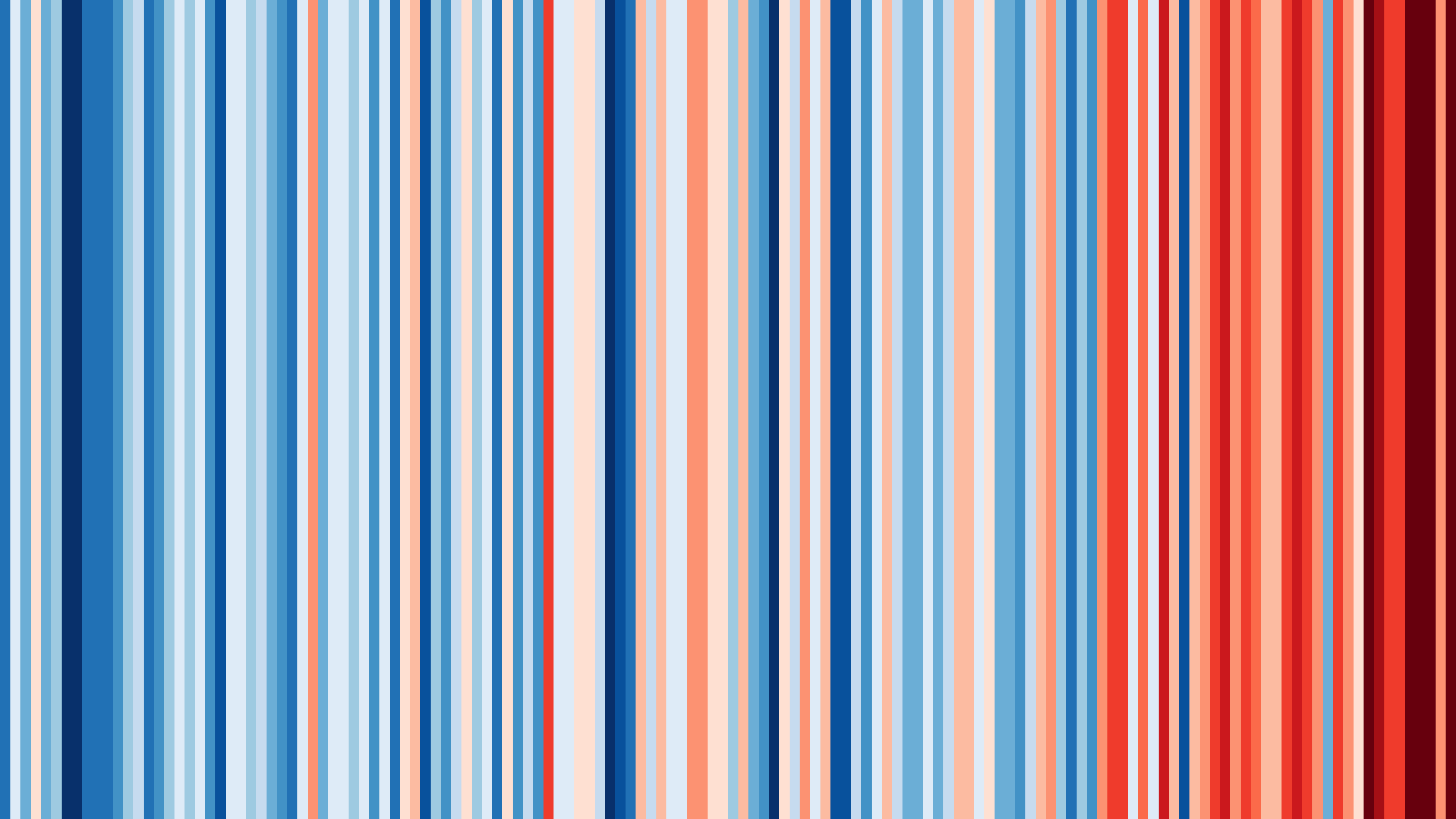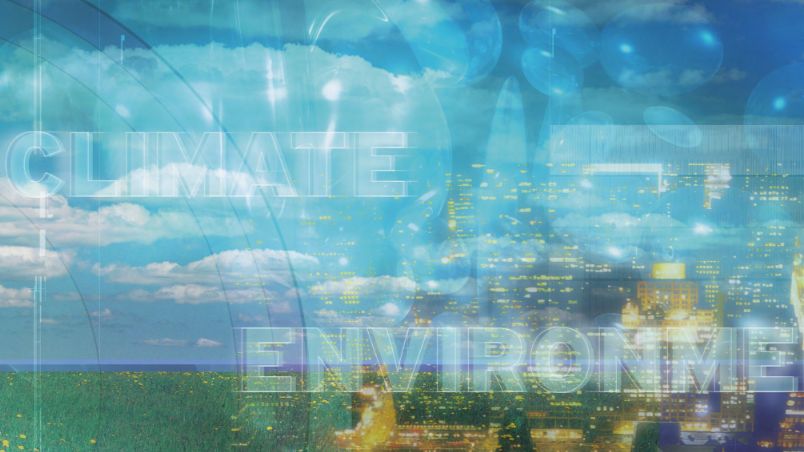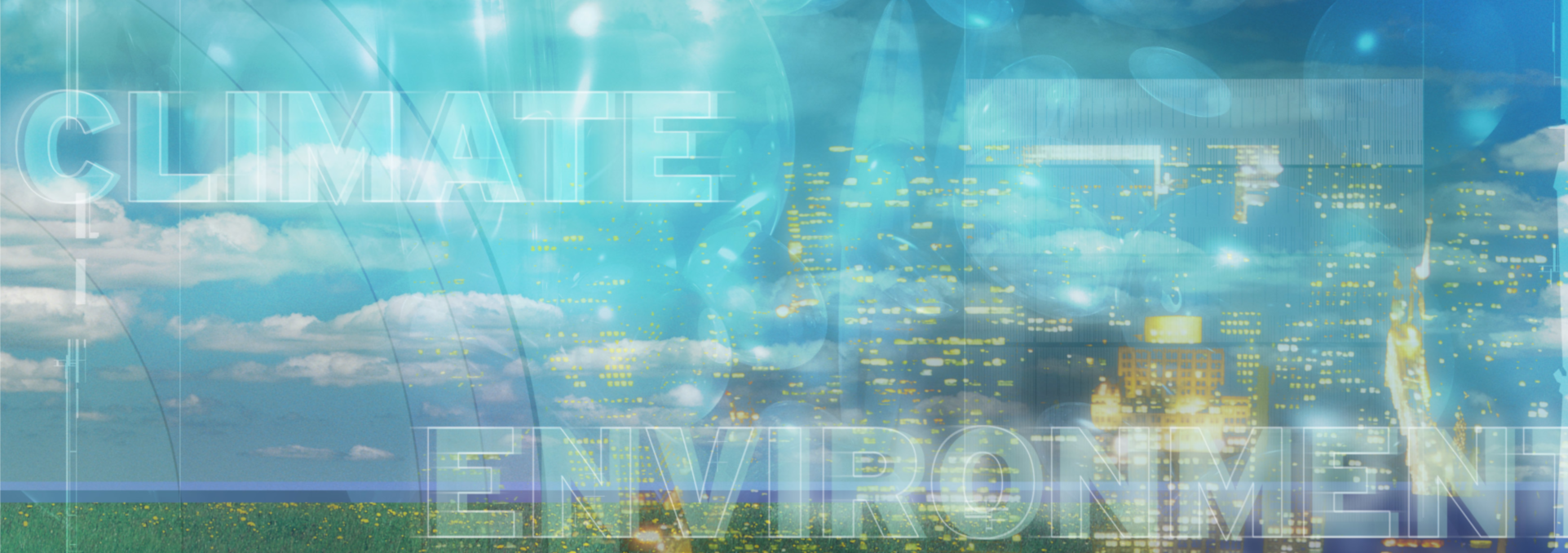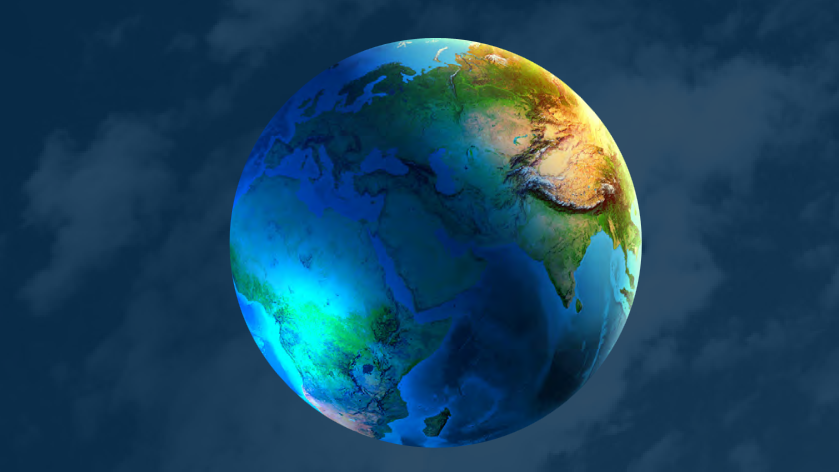For an Environment Worth Living in
Temperature change in Germany since 1881
 Ed Hawkins, University of Reading
Ed Hawkins, University of Reading 
Our Mission
Exploring Climate and Environment, Developing Solutions

Our Values
Respectful Discourse to Advanced Research with Responsibility

Our Vision
For an Environment Worth Living it
The climate strip shows the change in the annual mean temperature near the ground for Germany. The climate data comes from the German Weather Service (DWD) and the visualization was developed by Ed Hawkins (University of Reading, UK). For this type of presentation, the data from 1971-2000 are avaraged and this average is then subtracted from the respective annual mean temperatures. The deviations from this mean are now colored: colder years in shades of blue, warmer years in shades of red. For later years, the reds become more frequent and stronger - the sign of a warming over the years shown.
Our Events
We look forward to showing you our work at one of our numerous events.
Our events are divided into our series of events:
- Annual Conference and presentation of the Sparkassen-Environment-Award
- Climate Lecture & Environment Lecture
- Karlsruher Enviromental Impulses
- Climate Brain Bites
If you would like to be informed about future events of the KIT Climate and Environment Center, please subscribe here to our mailing list.
CEC News - only available in German


Am 05.11. fand im Gartensaal des Schloss Karlsruhe ein Vortrag von Prof. Dr. Daniela Jacob statt. Unter dem Titel „Time to Act!“ beleuchtete Prof. Jacob, Direktorin des Climate Service Center Germany (GERICS), die drängende Notwendigkeit von Klimaschutzmaßnahmen und Anpassungen – lokal und global.
mehr dazu
Am 09.10.2024 fanden die KA Impulse in der Triangle statt.
CO2 ist in aller Munde. Es soll weniger emittiert und produziert werden, man kann es abscheiden und sogar aus der Luft holen. Aber dann, wohin damit? Und was sind überhaupt negative Emissionen? Es gibt Industriezweige, auf die unser Wohlstand aufbaut und die bei der Herstellung von Produkten CO2 erzeugen. Wie kann da der weitere Anstieg von Kohlendioxid in der Atmosphäre reduziert werden?
Link_more
#9 There is something in the water … is it plastic? - Prof. Mario Franca
Plastic debris in the environment is a significant global problem. Through river transport, plastic particles become part of the water cycle and ultimately reach the ocean. Increasingly, micro- and nano-plastics are found in our food, drinking water, and even in human bodies. Prof. Mario Franca, professor of Hydraulic Engineering and Water Resources Management at KIT, is today’s podcast guest. His research focuses on the transport of plastic in rivers, a topic which is surprisingly poorly understood. Welcome to our first edition in English.
Link
Die Erde ist von Klima- und Umweltwandel
geprägt. Die Lebensbedingungen verän-
dern sich im 21. Jahrhundert schnell und
einschneidend. Demografische, technische
und ökonomische Entwicklungen wirken
sich auf Verfügbarkeit und Güte wichtiger
Ressourcen wie Luft, Wasser, Nahrung, En-
ergie und Rohstoffe aus. Dadurch werden
Staaten und Gesellschaften verletzlich. Dies
zeigt: Die Klima- und Umweltforschung
steht vor großen, neuen Herausforde-
rungen.

Forschende des KIT und Partner untersuchen den Einfluss von Ozon und Wasserdampf in Troposphäre und Stratosphäre
Link
Forschende des KIT entwickeln mithilfe von Maschinellem Lernen erstes nationales Hochwasservorhersagemodell für kleine Flüsse.
Link
Klaus Butterbach-Bahl erhält den Nachhaltigkeitspreis des Nobel Sustainability Trust
Link
Drei Forschende des KIT sind in diesem Jahr unter den meistzitierten Wissenschaftlerinnen und Wissenschaftlern weltweit
Link
Frau Prof. Dr. Katja Emmerich vom Institut für Massivbau und Baustofftechnologie (IMB/MPA/CMM), Baustoffe und Betonbau, Abteilung Natürliche Baustoffe und angewandte Tonmineralogie, wurde mit dem Georg Brown Lecture Award der Clay Minerals Group der Mineralogical Society of the UK and Ireland in Anerkennung für herausragende Forschung im Bereich der Tonmineralogie geehrt. Frau Prof. Dr. Katja Emmerich präsentierte die Georg Brown Lecture im Rahmen der Mid European Clay Conference in Plzen (CZ). Dabei zeigte sie die Struktur-Funktionalitäts-Beziehung von Tonen und Tonmineralen in geotechnischen Barrieren für radioaktive Endlager am Beispiel nationaler Bentonite und dem am KIT entwickelten Sandwich-System für Schachtverschlüsse auf.

Der Klimawandel macht das Wetter immer unberechenbarer. Hagel, Sturm, Gewitter und Starkregen nehmen zu. Allein in Deutschland beziffert der Gesamtverband der Versicherer die Schäden durch Naturgefahren für das Jahr 2023 auf 5,7 Milliarden Euro. Wird sich die Lage weiter zuspitzen und welche Maßnahmen sind nötig und möglich?
Link
